Everything JPMorgan CEO Jamie Dimon has said about the economy this year
Dimon has raised concerns about stagflation, the consequences of quantitative tightening, and other factors that could hurt the economy
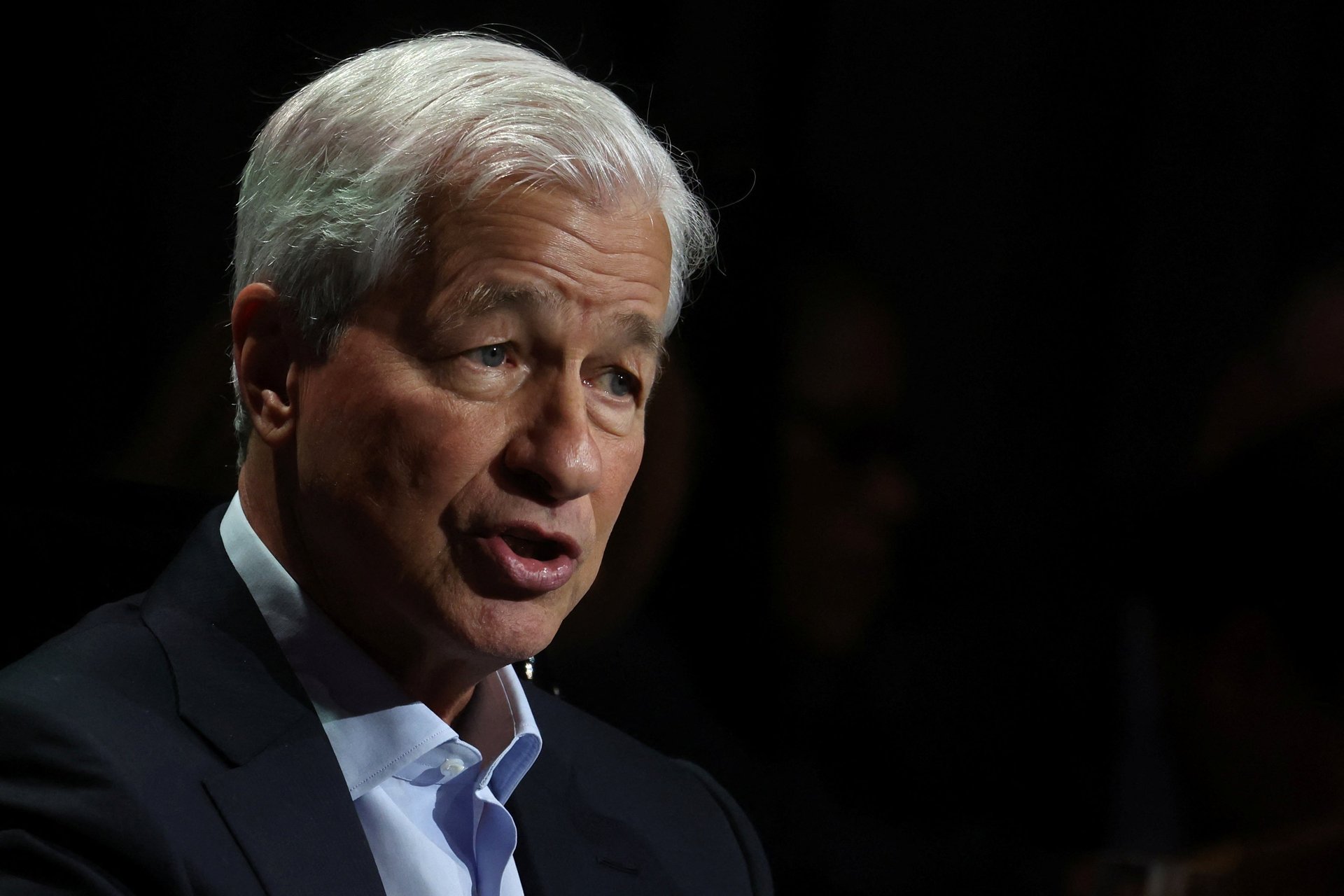
When JPMorgan Chase CEO Jamie Dimon speaks, people tend to listen. Especially when he talks about the state of the economy.
In 2024 so far, Dimon has done a lot of talking and writing about the country’s economic situation, and what it could look like given the uncertainty around interest rates and inflation, paired with a high fiscal deficit and ongoing geopolitical turmoil.
From Davos to earnings calls, here’s what Dimon has had to say about the U.S. economy so far this year.
2 / 10
A cautious start to 2024

Dimon kicked off this year with a warning in JPMorgan’s fourth-quarter 2023 earnings report: A number of “significant and somewhat unprecedented forces” are causing him, and the largest U.S. bank by assets, to remain cautious.
Those forces included the large amounts of government deficit spending and past stimulus fueling the economy, increased spending in the green economy, restructuring of global supply chains, higher military spending, and rising healthcare costs.
“This may lead inflation to be stickier and rates to be higher than markets expect,” he said.
There are also risks from the Federal Reserve Bank’s quantitative tightening campaign, which have brought interest rates to 23-year-highs, which he said drains over $900 billion of liquidity from the system annually. Plus, the ongoing wars in Ukraine and Gaza have the “potential to disrupt energy and food markets, migration, and military and economic relationships, in addition to their dreadful human cost,” he wrote.
“While we hope for the best, the past year demonstrated why we must be prepared for any environment,” Dimon wrote.
3 / 10
Everything isn’t “hunky-dory”
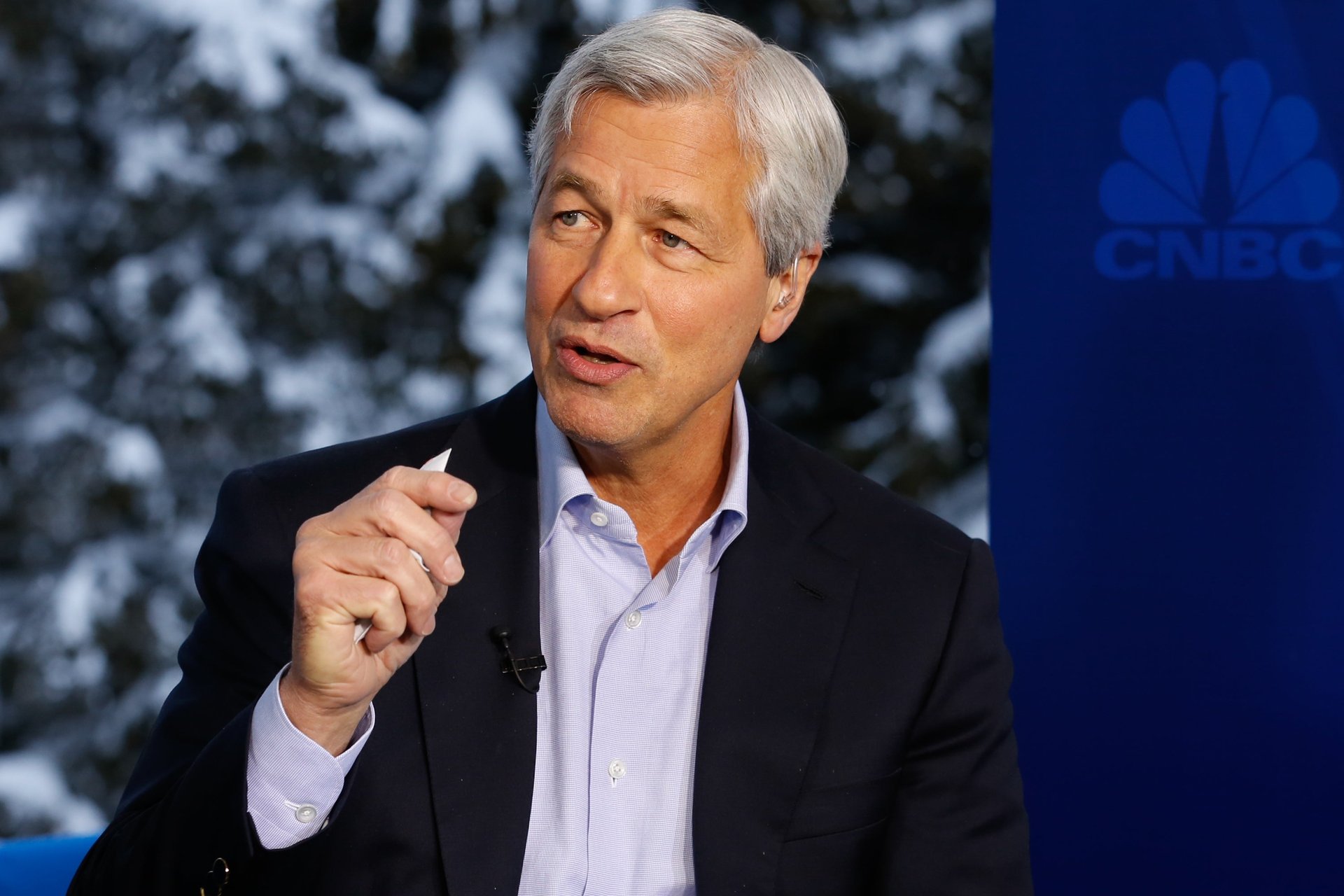
Dimon made headlines at the Davos World Economic Forum in Switzerland in January, when he told CNBC that “it’s a mistake to assume everything is hunky-dory.”
He likened the stellar stock market performance of 2023 to “this little drug we all feel, like it’s just great.”
“But remember, we had so much fiscal monetary stimulation,” he said, referring to the Biden administration’s fiscal stimulus during the pandemic. “So I’m a little more on the cautious side”
Quantitative tightening, paired with geopolitical challenges, including the wars in Ukraine and Gaza, attacks on shipping vessels the Red Sea, are all “very powerful forces that are going to be affecting us in ’24 and ’25,” he said.
“So, if I was the government, I would be preparing for what I’m going to do about that assuming things aren’t good,” he said.
4 / 10
The fiscal cliff
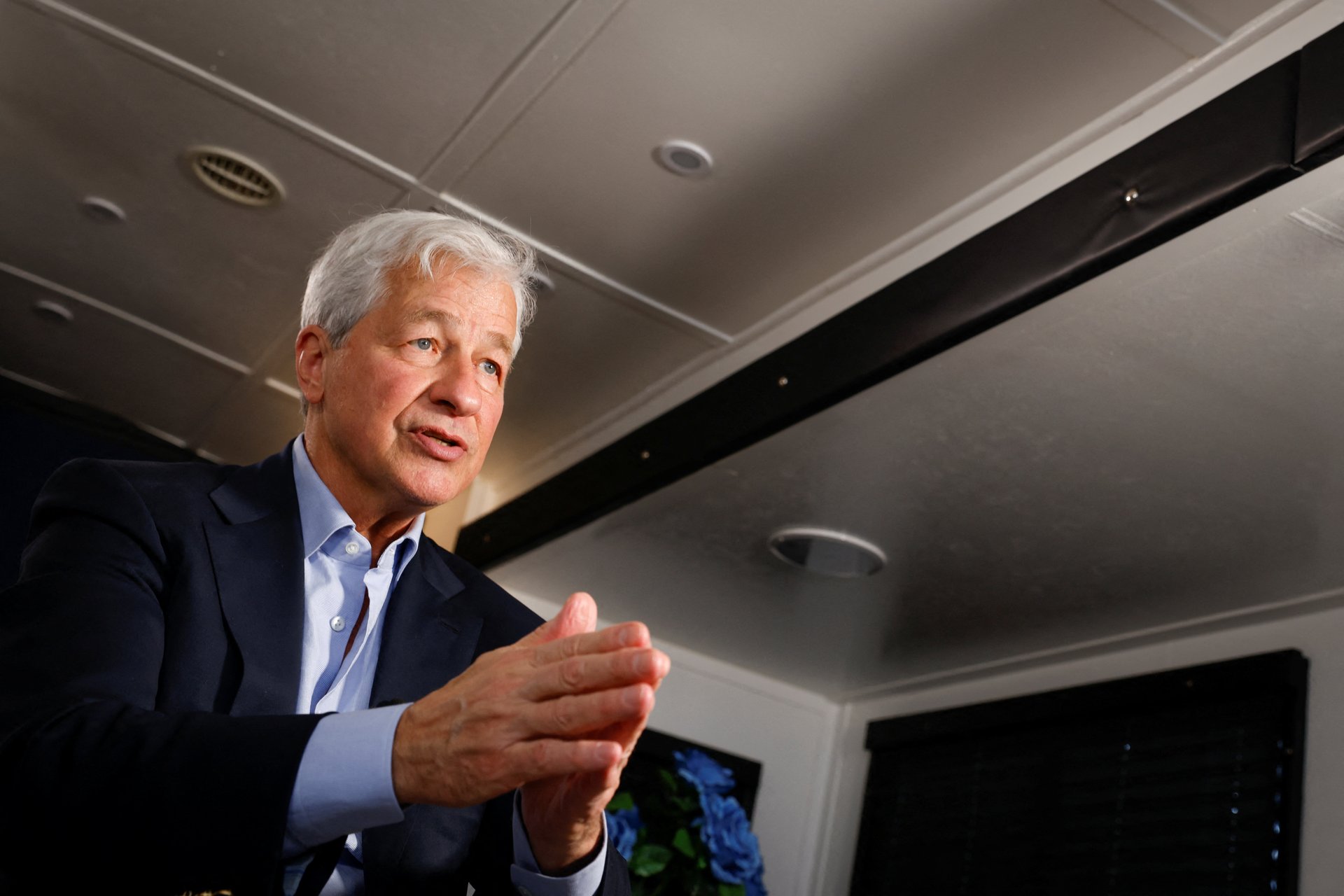
At the end of January, Dimon spoke alongside former House speaker Paul Ryan at the Bipartisan Policy Center.
During the question-and-answer session of the discussion, Dimon warned that the U.S. is approaching a possible fiscal cliff.
The real federal budget deficit more than doubled in 2023, jumping from $933 billion to $2 trillion, amounting to basically the same size as the current U.S. economy. The Congressional Budget Office projects that the ratio of public debt to gross domestic product will hit an all time high of 116% in 2034 (it’s expected to hit 99% by the end of this year). The average debt-to-GDP ratio over the last 50 years was approximately 48%.
Dimon warned that when the deficit reaches the expected 116%, “there will be a rebellion, and that’s the worst possible way to do it.”
“It is a cliff. We see the cliff — it’s about 10 years out. We’re going 60 miles-an-hour towards that cliff,” he said.
5 / 10
“So far, so good”
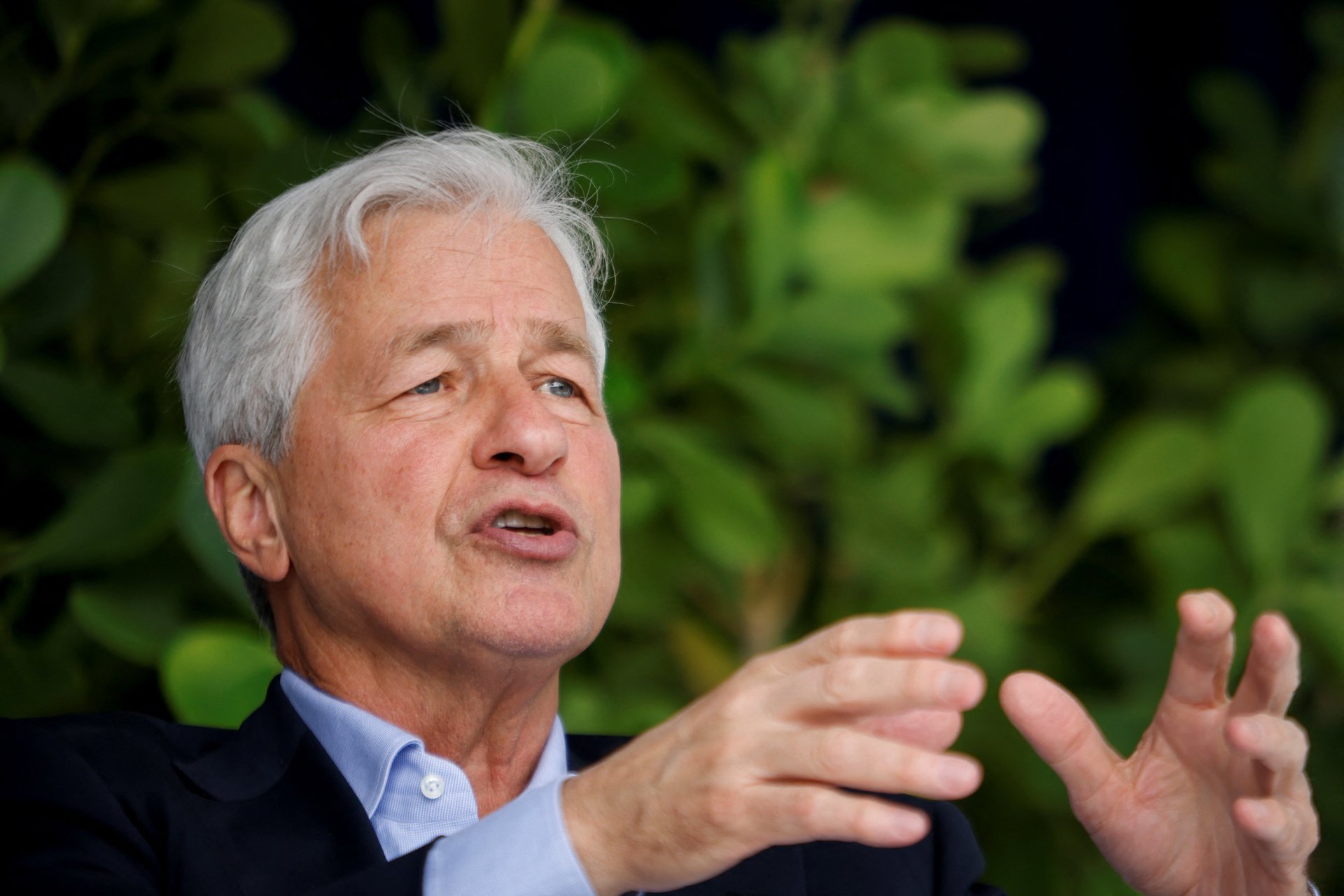
At the annual High Yield & Leveraged Finance Conference hosted by JPMorgan in Miami on Feb. 26, Dimon struck a slightly more optimistic note than usual.
“Right now, confidence is up,” he told CNBC. “There’s more M&A chatter. Equity marks are open a little bit. Spreads are getting close to historical lows, which means there’s a lot of money chasing high-yield deals. So things are kind of open. Markets are high. People feel it. So, so far, so good.”
When it comes to lingering fears from last year’s regional banking crisis, Dimon didn’t seem too concerned about a potential spread, given that last year’s bank failures were “very local.”
“As long as the economy stays like this, there will be more of a Whac-A-Mole,” he said. “There should be no domino effect. The problems you’ve seen were kind of idiosyncratic problems with Silicon Valley, First Republic, New York Community Bank.”
One area of concern, however, are high levels of fiscal spending, which could hamper hopes of a soft landing, where the government wrangles inflation without falling into a recession. While others said the odds of such an outcome are 70% or 80%, Dimon said he would put it at half of that.
6 / 10
A recession isn’t “off the table”
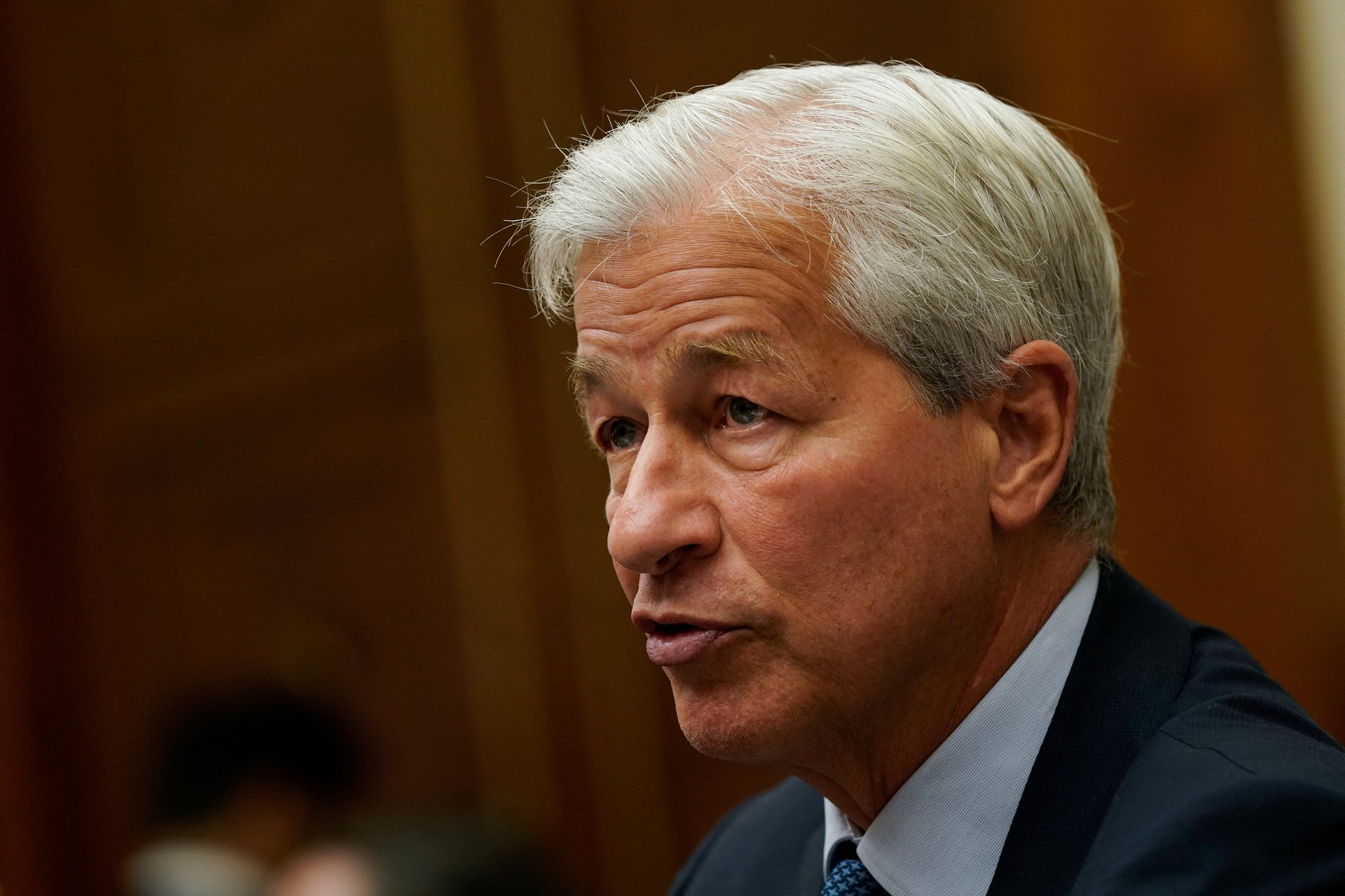
The JPMorgan CEO spoke at the Australian Financial Review Business Summit in Sydney via livestream in March.
He said he wouldn’t take the possibility of a U.S. recession “off the table” just yet. The COVID-19 pandemic has muddled key economic indicators, and Dimon said he takes them with “a grain of salt.”
But the worst case, according to Dimon, would be stagflation — an economic scenario where inflation stays high (or keeps climbing), economic growth slows, and unemployment creeps back up.
When it comes to interest rate cuts — which many analysts had hoped would take place in the first quarter of 2024 — Dimon warned the Federal Reserve to take its time.
“I think they have to be data-dependent,” he said. “If I were them, I would wait. You can always cut it quickly and dramatically. Their credibility is a little bit at stake here. I would even wait past June and let it all sort it out.”
Interest rates have sat at a 23-year-high of between 5.25% and 5.5% since July 2023, following the Federal Reserve’s intensive quantitative tightening campaign to try to bring inflation down to its 2% target. With the inflation reading popping back up to 3.5% in March, a second consecutive hotter-than-expected reading, the central bank has shown little interest in rushing to bring rates down.
The Federal Open Market Committee said earlier this month that it doesn’t expect to bring rates down until inflation shows that it’s moving sustainably toward 2%.
7 / 10
Interest rates could reach 8% — or more
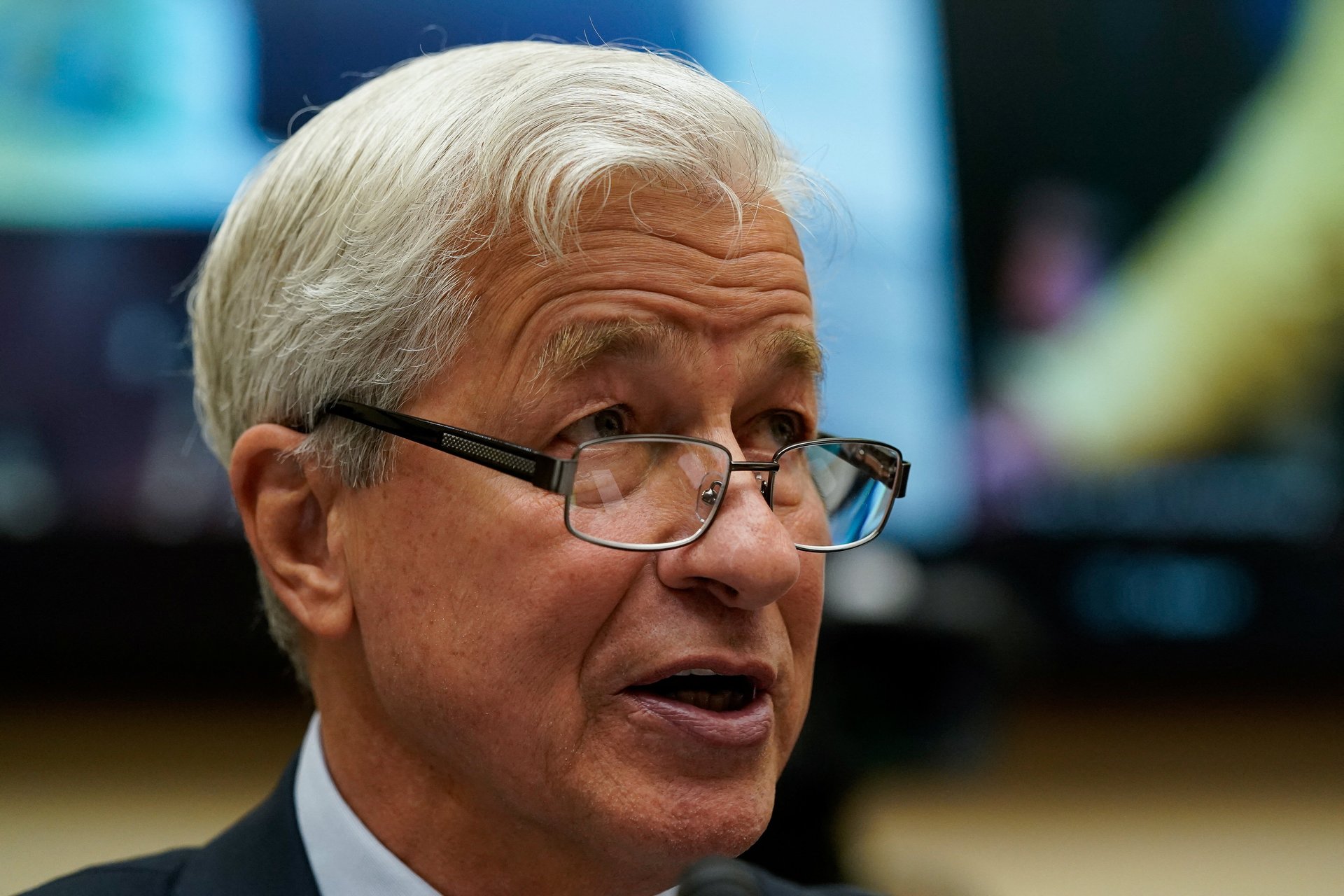
Dimon cast further doubt on imminent interest rate cuts in his annual letter to shareholders last month.
He said the bank is “prepared for a very broad range of interest rates, from 2% to 8% or even more,” paired with an equally wide range of economic outcomes. The CEO cited the inflationary effects of “ongoing fiscal spending, remilitarization of the world, restructuring of global trade, capital needs of the new green economy, and possibly higher energy costs in the future… due to a lack of needed investment in the energy infrastructure.”
Basically, Dimon said, anything can happen. The U.S. economy could see strong growth with moderate inflation, or a worst-case scenario of stagflation. In either case, higher interest rates are possible, according to him.
8 / 10
More uncertainty, more cautions
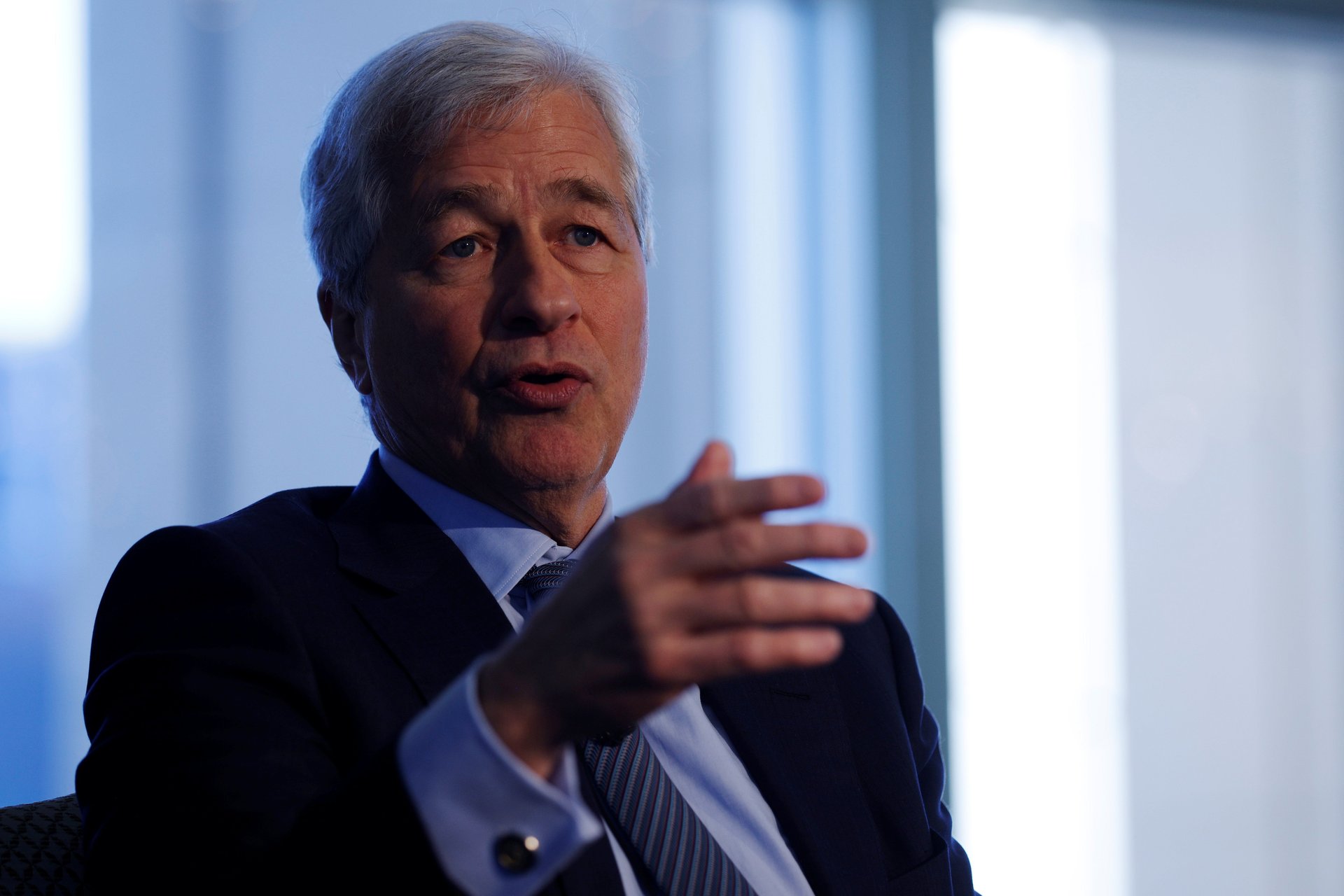
During a call with analysts following the bank’s first-quarter earnings report, Dimon doubled down on his cautions.
“We don’t really know what’s going to happen,” Dimon said.
Geopolitical conflicts like the wars in Ukraine and Israel, rising oil and gas prices, and uncertainty surrounding U.S. fiscal spending and elections have all kept Dimon cautious about the economic outlook — and stopped him from making sweeping predictions. Although the economy is doing “OK” right now, he said in the call, that doesn’t necessarily mean it will still be OK down the road.
Speculation about interest rates, yield curves, and other economic indicators are based on generally accepted economic scenarios. Today, that’s the expectation that the Federal Reserve will cut interest rates.
“These numbers have always been wrong,” Dimon said.
“You have to ask the question: What if other things happen, like higher rates, or a modest recession, etc., and then all these numbers change?” he said. “I just don’t think any of us should be surprised if and when that happens.”
9 / 10
The economy is ‘booming’
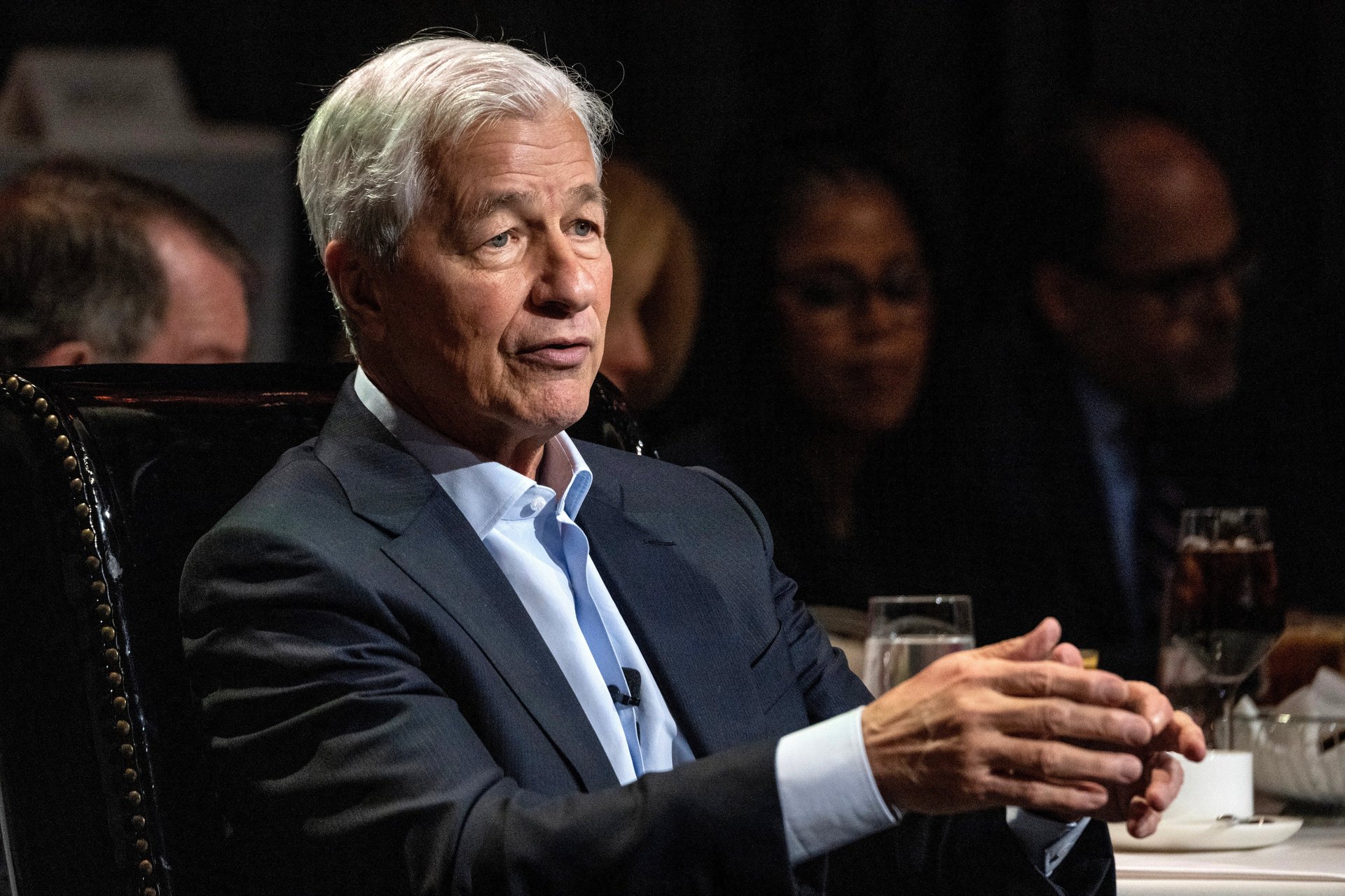
The economy is “unbelievable” and “booming” — and has been since the pandemic — Dimon said in an interview at an event at the Economic Club of New York in April.
Dimon said the economy is “in pretty good shape” and looks like it’s on track for a potential soft landing.
“But put me on the cautious side of that one,” he added.
With the unemployment rate below 4% since January 2022 and Americans much wealthier than they were just a few years ago thanks to pandemic-era savings, Dimon said consumers will continue to fare well, even if the economy goes into a recession.
The story will be different, however, if the U.S. falls into “stagflation.” Dimon warned. In that case, things might not be so rosy.
“But that doesn’t mean you can fight off the effects of stagflation or something like that if it gets much worse,” Dimon said. “I worry that it looks more like the ’70s than we’ve seen before.”
Following a boom period, stagflation destabilized the country’s economy in the 1970s, driven by high budget deficits, lower interest rates, an oil embargo levied by the Organization of Arab Petroleum Exporting Countries (OAPEC), and a currency crisis.
10 / 10
A rosy today doesn’t mean a rosy tomorrow
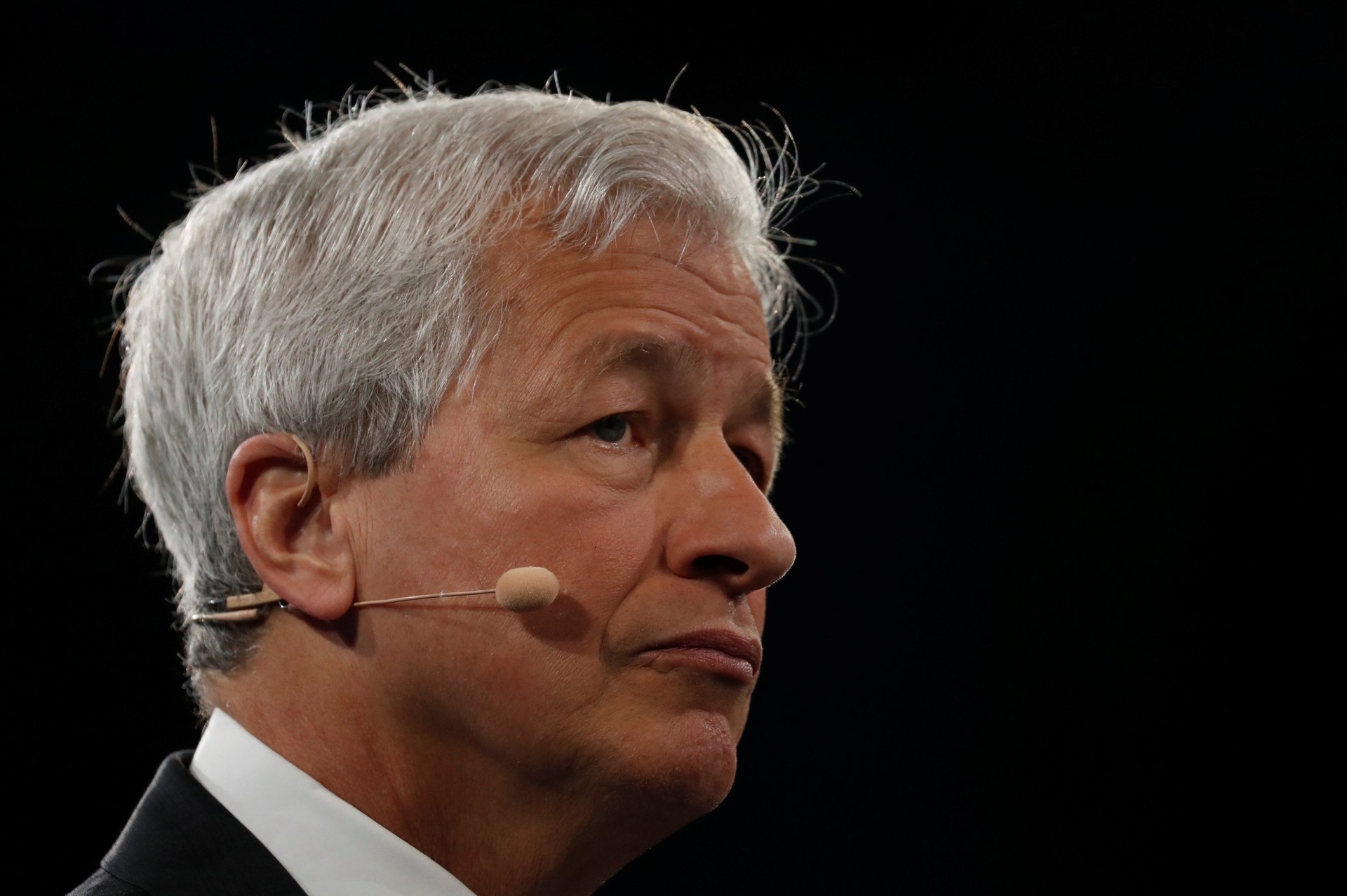
Dimon touched on many of the same issues in an April 26 interview with The Wall Street Journal’s Editor-in-Chief Emma Tucker.
He reiterated that it’s important to be prepared for any number of outcomes, and that although the economy is booming, that doesn’t mean things can’t turn on a dime.
“When I look at the range of possible outcomes, you can have that soft landing,” Dimon said. “I’m a little more worried that it may not be so soft and inflation may not quite go away as people expect. I’m not talking about just this year, I’m talking about ‘25 and ‘26.”
In particular, Dimon noted the effect of a “huge amount of fiscal deficit” and the government’s quantitative easing measures — as well as the global geopolitical situation — have unknown consequences, one of which could be inflation.
“I point out to a lot of people, things looked pretty rosy in 1972. They were not rosy in 1973,” Dimon said.
